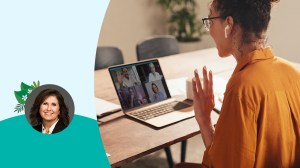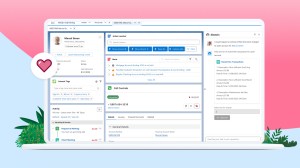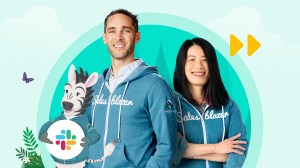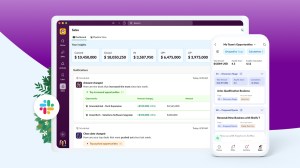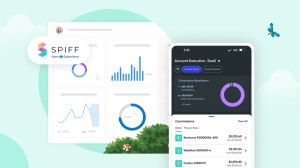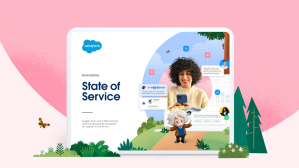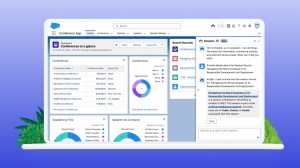Salesforce has always prioritized employee well-being, but that ethos took on new significance over the past 18 months. The COVID-19 pandemic has had far-reaching consequences for our global workforce. Employees, friends, family, and colleagues have been impacted in so many ways.
As we navigate the evolving phases of the pandemic, we continue to build on our reopening plans across Asia Pacific, Europe and the U.S. with the support of Salesforce technologies, our Real Estate and Employee Success teams, and our ongoing focus on safety. Through it all, we’ve put people first.
Along the way, as CIO at Salesforce, I’ve learned valuable lessons that can help guide other IT leaders as they adapt to the hybrid workforce of the future.
Embrace the hybrid work model
Even before the pandemic, many employees wanted a flexible work schedule to promote work-life balance. Depending on a company’s industry, culture, and customer needs, some companies were able to support a flexible work schedule and some could not.
For example, pre-COVID-19, my IT staff worked from home an average of two days per week. But, remote work became the norm over the past year without affecting productivity. Even though we are fully remote, we can likely all agree that in-person interactions are invaluable for collaboration and morale. Pending industry requirements, wherever possible, it no longer makes sense to mandate where and when people work or view the office as a single physical location.
Instead, we should embrace a hybrid approach that treats remote and in-office work equitably, certainly for the functions that are able to be remote. According to recent Salesforce research, nearly 60 percent of knowledge workers say hybrid work would improve their psychological well-being, and the majority say it would help their physical health. Plus, we found that Millennial and Gen X workers report being most enthusiastic about a hybrid arrangement.
At Salesforce, we’ve embraced a model we’re calling Success from Anywhere as we’ve continued to safely reopen offices around the world. This paradigm encourages everyone to work where, when, and how they’ll be most effective. At any given day, an employee may be at a customer location, working from home, or working from an office. We’ve redesigned offices to not only be safer, but also more focused on promoting collaboration and smooth integration of remote team members. And we’ve made sure employees can easily and securely access the tools they need from anywhere.
The model is working. Our surveys show that employees are 16 percent more likely to agree that they’re more productive at home than in the office. Meanwhile, the office remains a hub for meaningful collaboration: In our Sydney location, which started welcoming employees in August 2020, 64 percent of group spaces, like lounges and conferences, were used compared to 24 percent of desk spaces. Going forward, managers should assess workers based on results, not hours clocked in the physical office.
Invest in helping employees live up to their potential
No one wants to feel bogged down by busy work, but at the same time, introducing technological solutions too quickly and haphazardly can make things even more complicated. IT leaders should arm employees with the tools they need to be as productive as possible so they can reserve energy for the work that matters most.
For example, at Salesforce, we lean on our own cloud-based apps to streamline routine tasks through automated workflows, including the new hire onboarding experience. Even before we acquired Slack, we used the messaging tool to help employees communicate and collaborate in real time. We’ve also moved toward “smart meetings,” ensuring that all meetings have an agenda and only include those who really need to be there.
When employees are supported, they’re eager to learn and grow. IT leaders should provide access to training and professional development from anywhere. At Salesforce, we leverage Trailhead, our free online learning platform, to deliver an automated learning journey to every employee from their first day on the job. We’ve also moved leadership training programs online to make them accessible in a digital-first world.
Companies can also create fun and exciting opportunities for team members to innovate and learn from each other. In October, we’re holding an all-night virtual hackathon in which employees from around the world come up with prototypes for products or improved workflows and pitch them to a Shark Tank-like panel.
Center on employee wellness
Prioritizing health and safety is paramount to ensuring workers feel comfortable in the new hybrid work world.
We’ve relied on local risk factors and guidance from public health experts to inform reopening strategies. We have only allowed fully vaccinated employees to come into the office and mandated onsite COVID-19 testing (all employees can choose to be fully remote through the end of 2021). Our staff uses our own platform for employees, to complete symptom checks and schedule time in the office to avoid overcrowding. We’ve also provided plexiglass barriers, temperature screening stations, air purifiers and cleaning products to help make offices as safe as possible. Plenty of staff are available on site to help employees ease back into the office and answer questions. Creating opportunities to safely meet in person is key to cultivating a sense of community and connection.
A focus on wellness also extends to mental health. To combat technological burnout, we’re urging employees to take walks during virtual meetings or take a break from the camera on video calls. When possible, managers have given employees leeway to work whenever is most convenient, even if that’s in the early morning or evening. Amid the stresses of the pandemic, Salesforce has also encouraged employees to take one Friday per month off as a Wellness Day.
Learning as we go
With the landscape of the pandemic continuing to evolve, we as tech leaders need to remain agile given a constantly changing world of work.
We also have many unresolved challenges. Employees in urban hubs are concerned about the risks of public transportation. Many new hires have never been on site or met colleagues in person. Their first day in a re-opened office is yet another “first day” with new challenges like where to find supplies and how to use on-premises technologies. Some employees are unvaccinated, creating a different kind of challenge.
All of these factors, along with government guidance shifting quickly as conditions change, make the logistics of collaborating and innovating from anywhere, office included, very complicated.
Adjusting to the hybrid work model can be messy in the beginning, and we don’t always get it right the first time. But, embracing this shift will be critical to maintaining productivity, retaining top talent and staying competitive. Over time, IT leaders will get better and better at understanding what helps employees thrive wherever they are.
With that understanding comes the opportunity to deliver a people-first approach, and build the future of work in an increasingly digital world.
To read more content from Jo-ann on how CIO’s can have a wide-ranging impact throughout an organization, check out part one, part two and part three of her ‘CIO Cabinet Series’.
